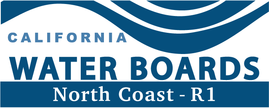Wastewater and Solid Waste Permitting
Overview
The Wastewater Permitting Programs regulates discharges of waste that may affect the quality of waters of the state (surface water and groundwater). These Programs cover a wide variety of discharges including wastewater (sewage) treatment facilities, onsite wastewater treatment systems (OWTS, a.k.a., septic systems), food processing industries (including wineries), municipal solid waste (landfills), and other industries that discharge non-hazardous wastes.
National Pollutant Discharge Elimination System (NPDES) Wastewater
The National Pollutant Discharge Elimination System (NPDES) program is a federal program, which has been delegated to the State of California for implementation. NPDES permits, also referred to as Waste Discharge Requirements, are issued to regulate the discharge of municipal wastewater or industrial process, cleaning, or cooling, wastewaters, commercial wastewater, treated groundwater from cleanup projects, or other wastes to surface waters only.
National Pollutant Discharge Elimination System (NPDES) Wastewater Program Page
If the waste discharge consists only of non-process storm water, it may be regulated under the NPDES Storm Water program.
Onsite Wastewater Treatment Systems (OWTS) / Septic Systems
Onsite wastewater treatment systems (OWTS) commonly known as septic systems that primarily treat domestic wastewater and employ subsurface disposal. On June 19, 2012, the State Water Resources Control Board (State Water Board) adopted Resolution No. 2012-0032, adopting the Water Quality Control Policy for Siting, Design, Operation, and Maintenance of Onsite Wastewater Treatment Systems (OWTS Policy). OWTS Program Page
Solid Waste Land Disposal Program / Landfills
The Solid Waste Land Disposal Program regulates the discharge to land of certain solid and liquid wastes. These wastes include municipal solid waste (MSW), hazardous wastes, designated wastes, and nonhazardous and inert solid wastes. In general, these wastes cannot be discharged directly to the ground surface without adversely affecting groundwater or surface water, and therefore must be contained to isolate them from the environment. Solid Waste Land Disposal Program / Landfills Program Page
Waste Discharge Requirements for Wastewater, Waste Residuals, & Recycled Water
The Waste Discharge Requirements (WDR) Program regulates all discharges of waste to land. Waste discharge requirements adopted under the WDR Program protect surface water by either prohibiting discharge of a pollutant to waters of the U.S. or prescribing requirements for discharge to surface waters not waters of the U.S., and they protect groundwater by prescribing waste containment, treatment, and control requirements. The WDR program, also known as the Non-Chapter 15 Permitting, Surveillance and Enforcement Program, is a mandated program under which WDRs are issued to regulate the discharge of municipal, industrial, commercial and other wastes to land. Waste Discharge Requirements for Wastewater, Waste Residuals, & Recycled Water Program Page
Waste Classification
Section 13260(a) of the California Water Code requires that any person discharging waste or proposing to discharge waste within any region, other than to a community sewer system, that could affect the quality of the waters of the State, must file a report of waste discharge. This report must outline the types of wastes to be discharged in order to determine appropriate waste management unit design, operation, monitoring, closure and post closure maintenance requirements. The first step in obtaining Waste Discharge Requirement is determining the classification of wastes discharged to land according to risk they pose to water quality, and determine appropriate waste management options. This link provides a conceptual framework for waste classification and determination of waste management options



